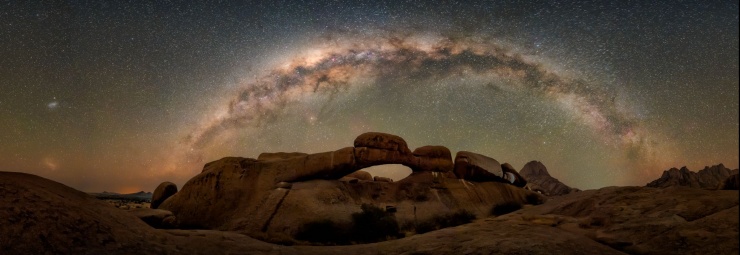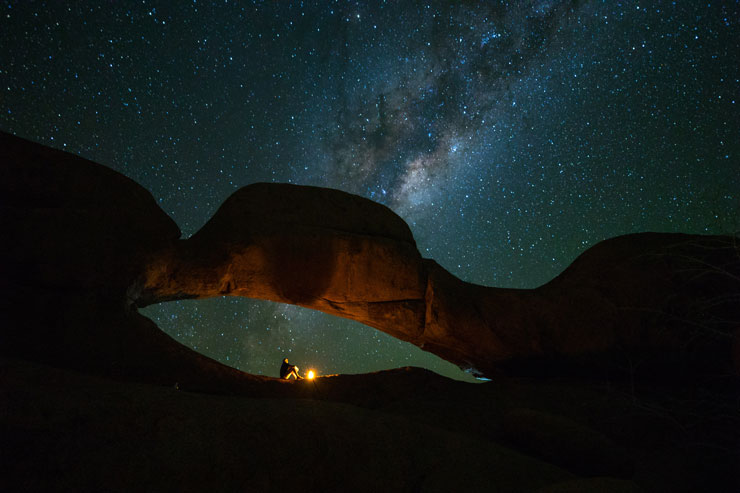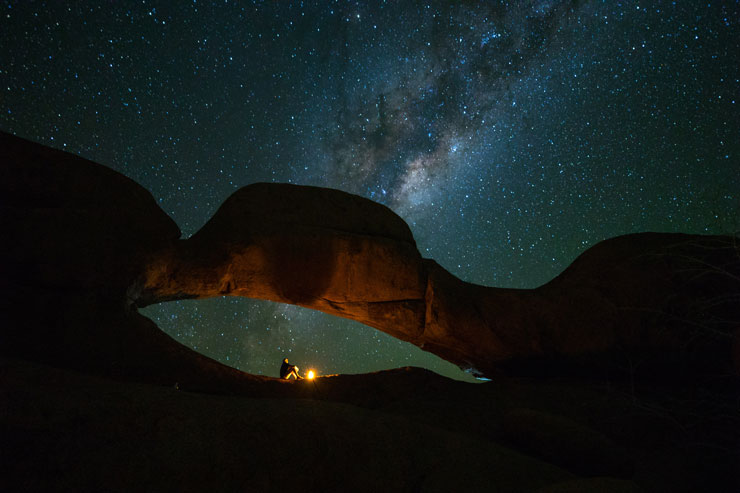The PhotoPills Expedition to Namibia is Sold Out (Join the Waiting List)
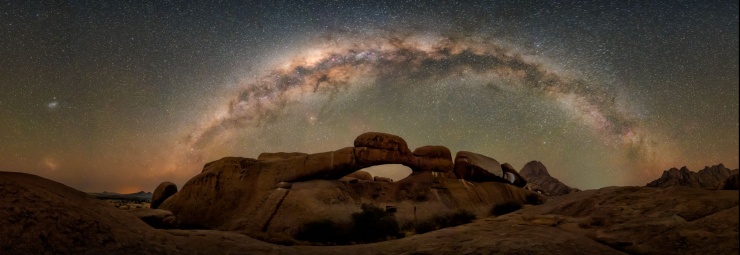
The PhotoPills Expedition to Namibia is SOLD OUT!
Wow!
All 12 spots are already gone!
Thanks so much :D
Wish to join us?
Don't give up!
There are always cancellations...
Click here to join the Waiting List.
Be the first one to know when a cancellation occurs.
We’re going to Namibia...
Are you in?
Around the New Moon...
From August 26th to September 11th 2024, Laura Oppelt and Antoni Cladera (PhotoPills Masters) will travel across Namibia to photograph the Milky Way and the golden light along with impressive rock formations, giant red sand dunes, natural arches, dead trees, the diverse wildlife and the Himba.
In one of the darkest skies on the planet!
Of course...
We’ll be taking photos all day long...
But...
Can you imagine it?
To photograph the Milky Way and the golden light with iconic mountains, rare rock formations, immense red-sand dunes, hidden natural arches, isolated dead trees, millenary living plants, elephants, lions, zebras, giraffes and the Himba tribe.
We’re dreaming about it!
To achieve it, we’ll use the planning power of PhotoPills and the expert knowledge of Laura Oppelt and Antoni Cladera to always be at the right place at the right time.
Top secret: we have quite a few legendary photos planned already ;)
Are you in?
The deal (only 12 spots)
Since you subscribed to the Priority Access list...
We're offering you a €500 discount on the regular price!
All you have to do is to book 1 of the 12 spots available before Sunday September 24th.
Read carefully all the details of this unique adventure.
And when you’re ready, click here to book your spot.
Please, book as soon as possible. The seats are sold on a first come, first served basis.
The adventure
12 PhotoPillers | 2 PhotoPills Masters | Namibia | Endless legendary photos
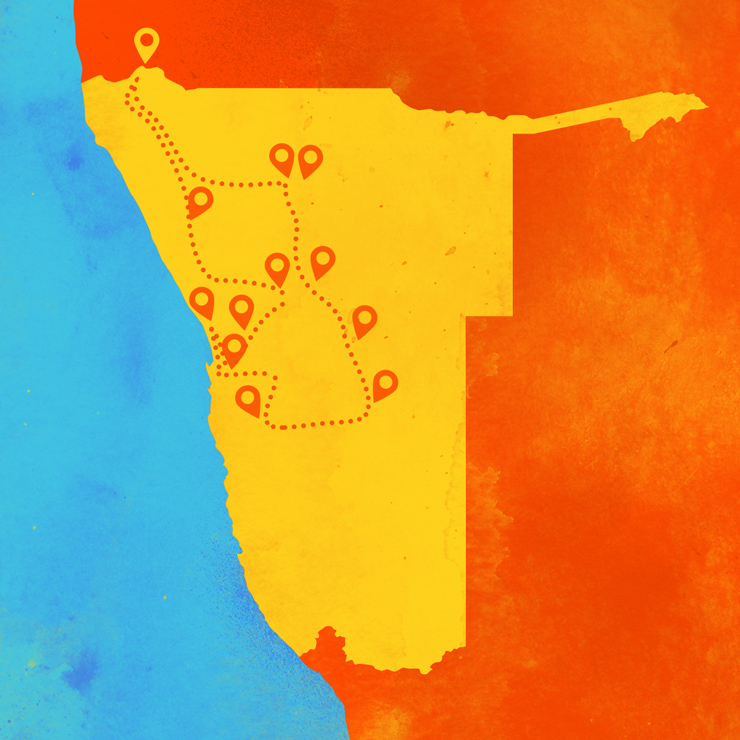
Warning: This is not a honeymoon... but almost!
We’ll travel in well equipped 4 x 4 vehicles with private drivers...
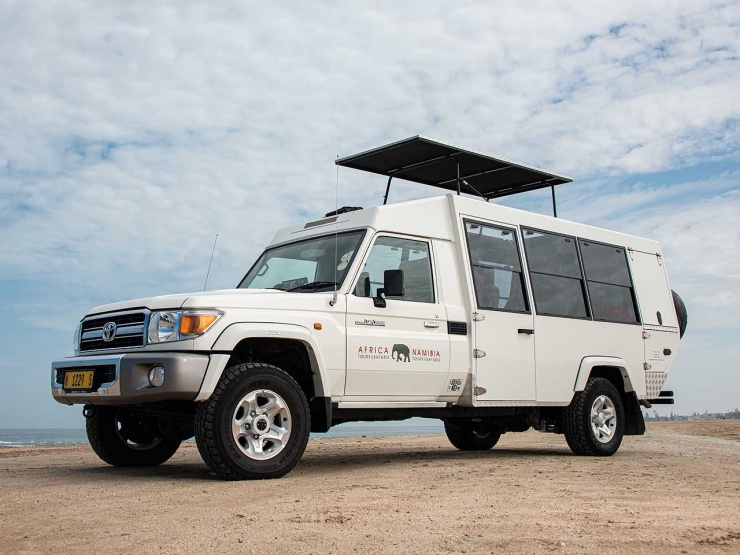
And we’ll sleep in comfortable lodges!
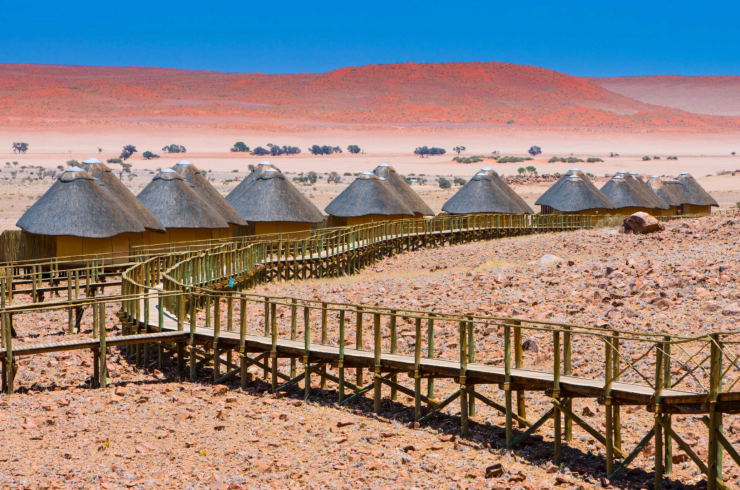
Long story short...
We’re recruiting 12 brave PhotoPillers (PhotoPills and photography freaks) that will join us on a 17-day expedition to photograph the Milky Way and the golden light along with the true treasures of Namibia.
This expedition is a non-stop safari to chase legendary photos and you are a key asset!
We have planned tons of photos, and we’ll travel many kilometers to capture them...
But we also want to maximize our flexibility in terms of itinerary and schedule in order to take advantage of all the opportunities that will surely come our way.
If we come across a herd of lionesses hunting or we spot a group of elephants, we’ll make a halt and take advantage of the occasion.
When we are hungry, we’ll stop and eat. When we are tired, we’ll stop and rest (cold beer included)...
You are about to embark on a PhotoPills’ style journey. And it’s not going to be a honeymoon precisely... :P
You’ll be a true photographer!
Are you in?
Day 1. Monday, August 26th - Welcome to Namibia!
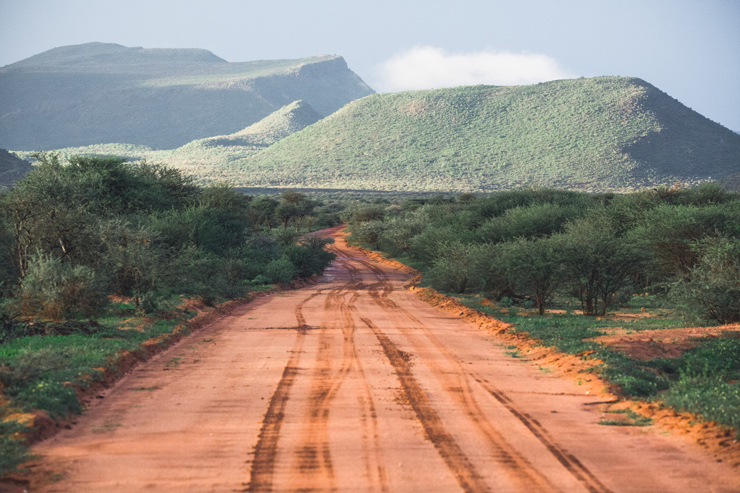
It’s Monday morning when you land at Hosea Kutako International Airport, the main airport of Namibia, located 45 km (25 mi) from the capital, Windhoek.
There, Laura Oppelt and Antoni Cladera, your PhotoPills Masters, welcome you. You can’t miss them: they’re wearing the yellow PhotoPills t-shirt.
Once the whole group of expeditioners is ready, we’ll begin our journey towards the capital.
On this first night, we will sleep at The Weinberg Windhoek. With its elegant architecture and lavish designer rooms, it offers luxury and tranquility in the heart of the city.
4:00 pm
After checking in at the hotel, you can enjoy a long nap (siesta) or relax by the pool or have something at the beautiful bar located at the top terrace. All options are great to recover from all the travels.
6:00 pm
A hat, sun cream, lip balm, anti mosquito spray... There is always something you forgot to bring from home. And there is always one last thing to buy before a long expedition. So we’ll go shopping.
8:00 pm
You find yourself in a taxi.
Did you hear it? That sound inside? Our stomachs are roaring.
Because tonight we’ll have dinner at our favorite restaurant in Namibia – the always inspiring Joe’s Beer House, which happens to be just a few minutes from our hotel. So cool!
We’ll step inside Joe’s to feel, taste and see Namibia... And forget everything and everywhere else.
11:00 pm
It’s been a long day. I bet you can’t wait to go to bed. Enjoy a good and well deserved sleep.
Tomorrow the Namib desert awaits.
Day 2. Tuesday, August 27th - The Red Desert
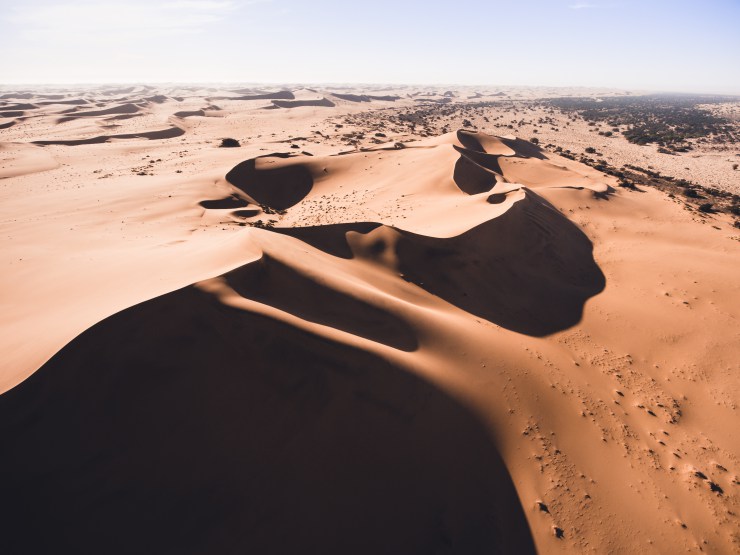
8:00 am
After a hearty breakfast, we’ll jump onto our 4x4 vehicles with private drivers and head towards the west. We’re going to Sossusvlei, our next destination.
Located in the heart of the Namib-Naukluft National Park, Sossusvlei enjoys some of the highest dunes in the world, reaching almost 400 m (1,300 ft).
These huge dunes are red because the iron in the sand is oxidized. They are covered with small vegetation that hydrates with the Atlantic breezes, creating some little ochre, red and blue tints.
We’ll stop along the way to take our first photos of the arid landscapes of Namibia. And around noon, we’ll stop for lunch in a beautiful place.
2:00 pm
We’ll check-in at the unique Sossus Dune Lodge.
The lodge is situated within the park. This gives us the benefit of being able to reach Sossusvlei before Sunrise, and to stay until after Sunset.
And on our return after an exhilarating day, we’ll relax in the tranquility and splendor of the Namib Desert, under the spectacular African sky.
After a short briefing of the afternoon plan, we’ll go scouting. Our goal is to find an isolated subject (tree if possible) near the lodge, and use the PhotoPills’ Night Augmented Reality tool to plan a cool Milky Way photo for tonight.
3:30 pm
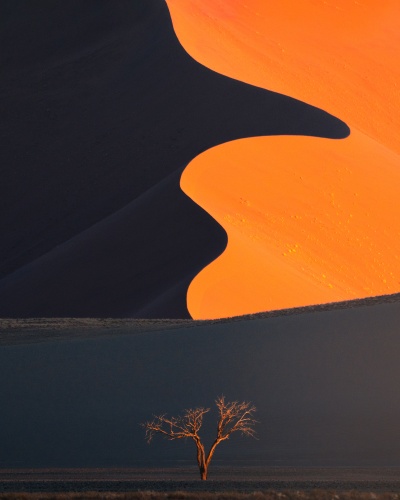
Sossusvlei hides many treasures, and we want to explore and photograph them all.
So get ready, because we’re driving along a narrow path towards the immense dunes.
Among the many dunes to photograph, there are two that are simply spectacular: Dune 35 and Dune 40.
Open PhotoPills to check that...
Golden hour begins at 6:14 pm, Sunset is at 6:45 pm, blue hour begins at 6:59 pm and blue hour ends at 7:08 pm.
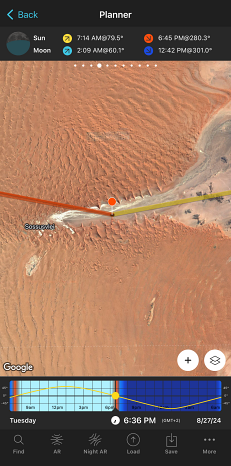
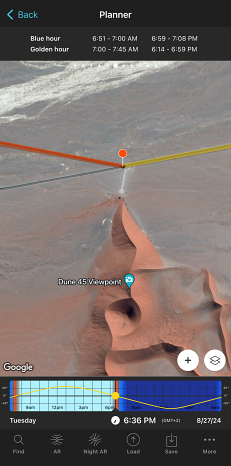
The contrast of lights and shadows on the dunes is just spectacular.
Look! An oryx!
Get your gear ready, it’s time to photograph it against the immense red sand wall of the dunes.
8:00 pm
After Sunset, we’ll go back to our comfortable lodge where we’ll have dinner and enjoy the evening under the African sky.
Sossus Dune Lodge sports a restaurant and bar with a panoramic view of the surrounding rugged landscape. An à la carte menu caters to all needs.
The wooden walkway that interlinks the chalets leads to a central area, with a restaurant, lounge, bar, Sunset deck and swimming pool, offering a great place to relax and take in the breathtaking desertscape.
10:00 pm

The Moon (32%) is under the horizon. The sky is pitch black!
Remember the tree or interesting rock we found in the afternoon? Well, we’re now walking towards it. Because the Milky Way will be in place very soon, just as you planned it.
Note: If we can’t find an interesting subject to plan our Milky Way shot, we’ll take a group photo under the Milky Way arch.
We’re in the southern hemisphere, the Milky Way core looks huge above our heads. What a show!
The astronomical twilight begins at 7:34 pm and the Galactic Center is visible from 8:00 pm until 3:18 am. The waning crescent Moon (32%) rises at 3:08 am.
1:00 am
Time to go to bed. Tomorrow we’ll get up very early to reach the mystic Deadvlei before Sunrise.
Photographic Pills:
- Sossusvlei red sea of dunes.
- Dunes 35 and 40.
- Desert wildlife.
- Golden hour in the desert.
- Milky Way arch in the desert and group photo.
Day 3. Wednesday, August 28th - The Dead Forest
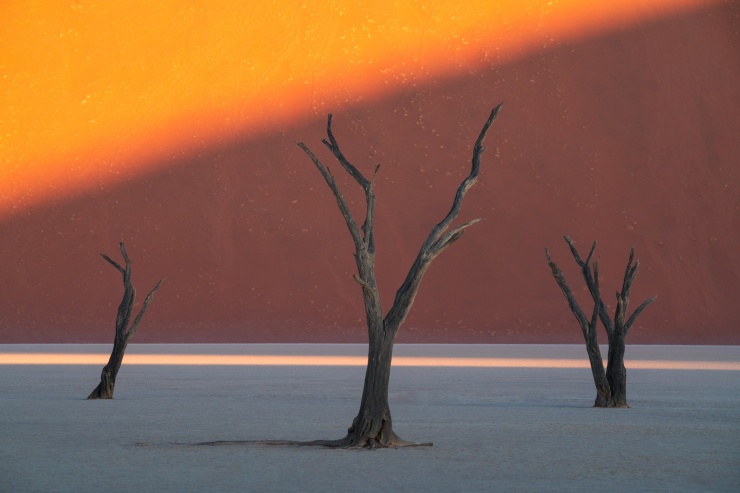
6:00 am
Wake up!
The access gate to the park opens at Sunrise (7:14 am). It’s when everyone staying outside the park will rush to Deadvlei.
But because we’re sleeping inside the park, we’ll be able to get to Deadvlei before everyone else!
Once there, our goal is to capture the shadows cast by the dunes while meeting the white-salty soil of the ancient pan. There, the dead trees stand still, petrified.
It’s a dead forest.
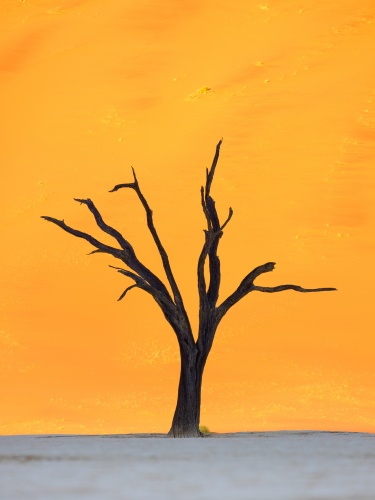
The very moment the shadows reach the ground, we’ll be ready to shoot low, almost laying on the ground, to capture the magic golden color of the dunes, as the perfect background for our petrified trees, still in the shadows.
Blue hour begins at 6:50 am, golden hour begins at 6:59 am, Sunrise is at 7:14 am and golden hour ends at 7:45 am.
9:00 am
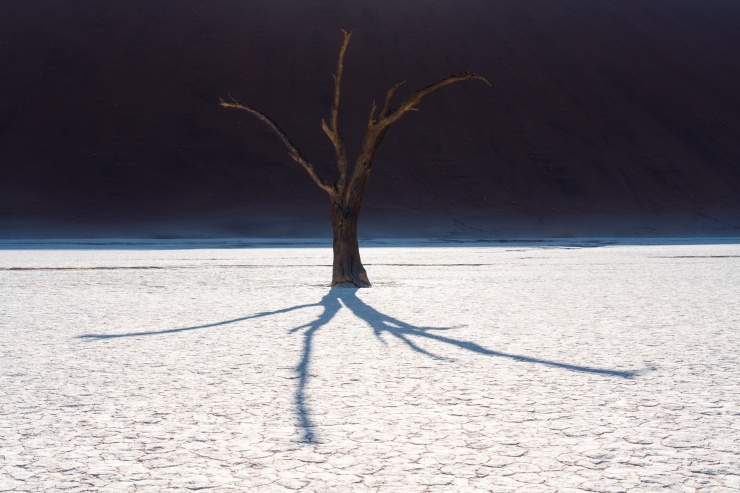
After a great morning start in Deadvlei, we’ll spend the morning photographing the beautiful landscapes and dunes around.
With its 325 m (1,066 ft), Big Daddy is the tallest dune in the area. From the top, you have a unique view of Deadvlei.
2 km (1.2 mi) away from where we left the car, there is an area known as the Hidden Vlei. It’s a much less visited vlei. This hidden gem is a place to enjoy a bit of solitude in the desert vastness.
Dunes 40, 45 and 50 are also a must. We’ll stop to photograph them.
As we go from spot to spot, as we move from dune to dune, be ready to take any opportunity that arises to photograph the wildlife. Look, more oryxes over there!
12:00 pm
Lunch awaits at the lodge. What is it going to be? Namibian food or something more American or European?
And after lunch, we’ll enjoy a bit of down time.
3:00 pm
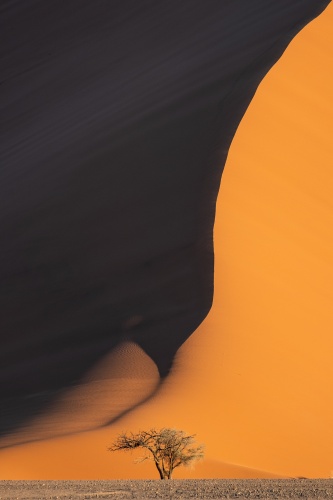
In the afternoon we’ll keep taking photos non-stop.
We know the area very well and where to go to find great compositions. The dunes, the trees, the desert, the wildlife will give us lots of photo opportunities.
After Sunset, we’ll head towards the lodge. On our way out we’ll stop to capture a few more photos.
Golden hour begins at 6:15 pm, Sunset is at 6:45 pm, blue hour begins at 7:00 pm and blue hour ends at 7:09 pm.
8:00 pm
Dinner and songs under the stars.
9:00 pm
You should go to bed early today. It’s been a long, long day.
But if you have some energy left, there is a cool shot you can take: a Star Trails with the desert landscapes.
The astronomical twilight begins at 7:34 pm and the Galactic Center is visible from 8:00 pm until 3:14 am. The Moon (22%) rises at 4:05 am.
12:00 am
Time to go to bed. Tomorrow, we’ll photograph a nearby beautiful dune at Sunrise before heading north, towards the Atlantic ocean.
Photographic Pills:
- Sunrise and golden hour at Deadvlei.
- Big Daddy dune.
- Hidden Vlei.
- Dunes 40, 45 and 50.
- Desert wildlife.
- Golden hour in the desert.
- Star Trails in the desert.
Day 4. Thursday, August 29th - Golden Dunes, Pink Flamingos and White Pelicans
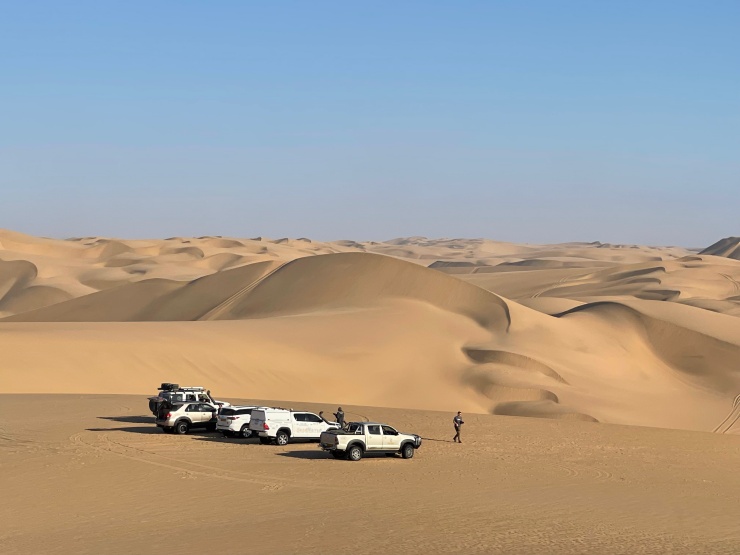
6:00 am
Good morning team!
Pick your camera because we’re heading to Elim Dune. It’s not far away, but we need to get there before the blue hour begins. Hurry up!
This golden dune covered by low scrub is beautiful. It’s a great subject to be photographed at Sunrise. Also, you can easily climb it to enjoy a morning view of the desert.
Blue hour begins at 6:49 am, golden hour begins at 6:58 am, Sunrise is at 7:13 am and golden hour ends at 7:44 am.
8:30 am
Breakfast at the lodge and pack up. Get ready to depart.
10:00 am
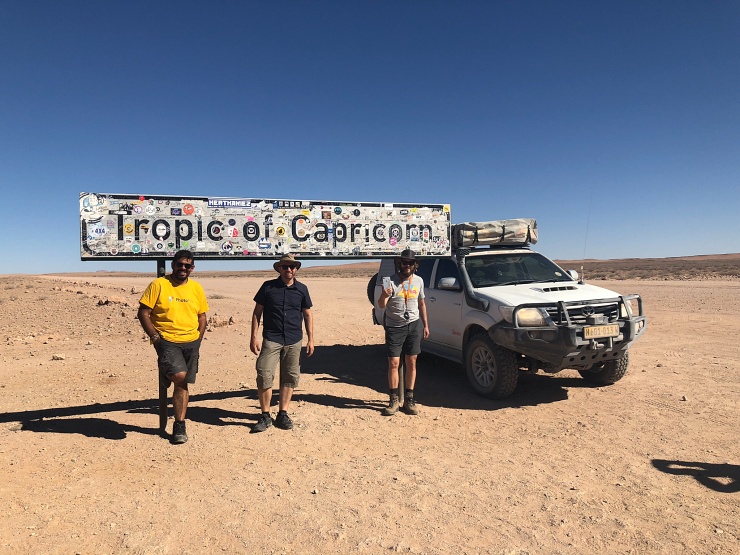
We’re on the road again. We’re heading north, toward the coast, in search of pink flamingos and a famous apple pie!
It’s a long way with many interesting stops.
First, we’ll stop at Solitaire, a remote dusty settlement at the edge of the Namib-Naukluft National Park. There we’ll find a few Quiver trees, several abandoned rusty vehicles and a tasty apple pie. It’s a great stop to stretch our legs and refill the tanks.
A bit more to the north, we’ll cross the Tropic of Capricorn. The big sign marking it is a great opportunity to take a selfie. It may be a bit touristy, but it’s fun and a great excuse to tell your relatives that you’re safe and sound.
1:00 pm
Stop for a quick lunch in the desert.
3:00 pm
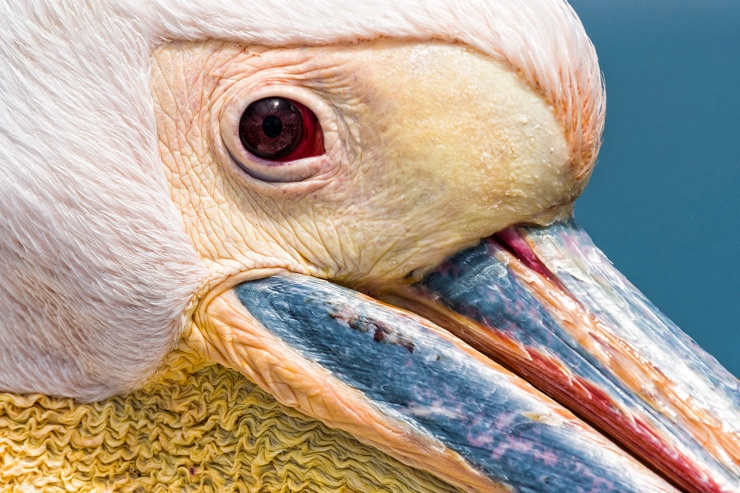
As soon as we arrive at Walvis Bay, we’ll start searching for pink flamingos, great white pelicans and many more birds.
Walvis Bay is the second largest city in Namibia. It’s located on the Atlantic coast, north of the Namib-Naukluft National Park.
The bay is rich in plankton and marine life, like the southern right whale and the Cape fur seal.
Here we’ll spend the afternoon until Sunset photographing the rich bird diversity: flamingos, pelicans, chestnut-banded plovers, pied avocets, Cape teals and black-necked grebes...
Over 150 species of bird have been recorded in the bay. Impressive!
Golden hour begins at 6:20 pm, Sunset is at 6:50 pm, blue hour begins at 7:05 pm and blue hour ends at 7:13 pm.
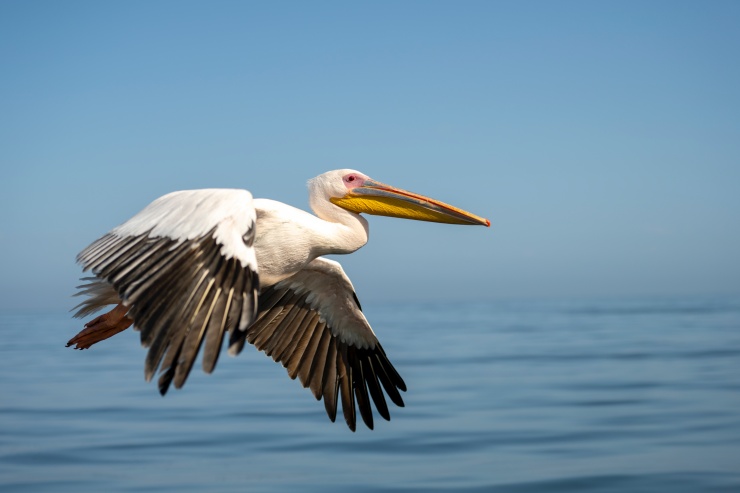
7:30 pm
After a 30-minute drive, we’ll arrive at our hotel in Swakopmund, the Strand Hotel Swakopmund by the Atlantic Ocean.
Here we’ll check in, unpack our luggage and get ready for dinner.
With 44,725 inhabitants, Swakopmund is the fourth largest city in Namibia. Founded in 1892, it’s a true example of German colonial architecture. When you walk along its streets, a strange feeling invades you.
Are you really in Africa?
8:00 pm
Tonight we’ll have dinner at the hotel... or at a local restaurant, among tall palm trees.
11:00 pm
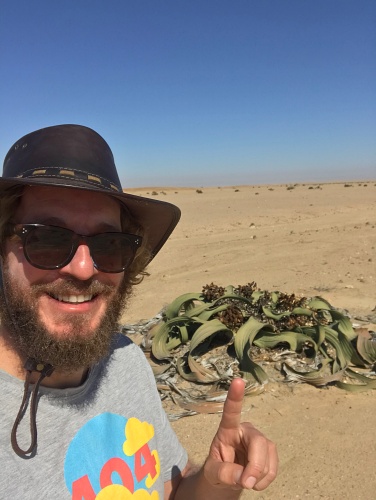
How is your energy level?
The Galactic Center is about to pop up in the sky. And we want to photograph it with a super rare endemic plant of the Namib desert. A plant that can live for more than a thousand years.
Yes, you guessed it right. I’m talking about the “beautiful” Welwitschia Mirabilis.
The astronomical twilight begins at 7:39 pm and the Galactic Center is visible from 8:05 pm until 3:14 am. The Moon (22%) rises at 4:05 am.
1:00 am
Bed time. Tomorrow is the Secret day :P
Photographic Pills:
- Sunrise, golden hour and blue hour at Elim dune.
- Settlement of Solitaire.
- Tropic of Capricorn.
- Pink flamingos, pelicans and many more birds in Walvis Bay.
- Welwitschia Mirabilis with the Milky Way and/or Star Trails.
Day 5. Friday, August 30th - The Secret
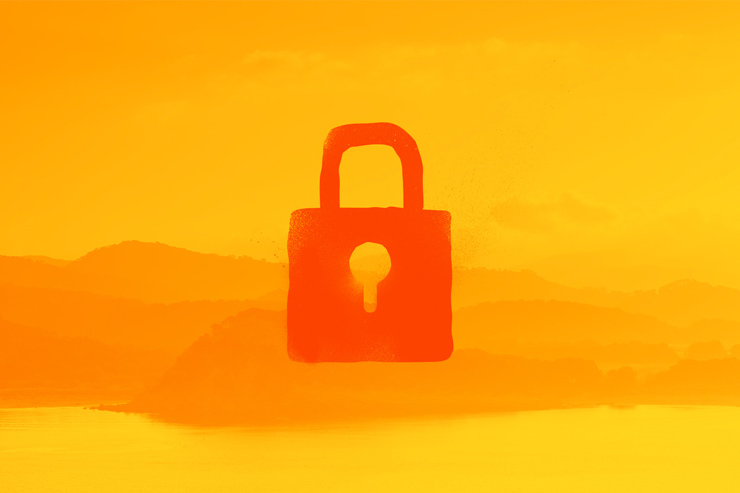
I’ve been giving you many details of this crazy expedition to Namibia.
Maybe even too many...
But on August 30th we’ll do something completely different. So different and fun that we’ve decided to keep it secret.
You'll have to be there, with us, to figure it out :P
Day 6. Saturday, August 31st - The Majestic Spitzkoppe

9:00 am
Nice shower, jam packed breakfast and to the vehicles. Today we’re going east, we’re going to Spitzkoppe.
With a height of 1,728 m (5,600 ft), Spitzkoppe is one of the icons of Namibia. This stunning rock formation is located in the desert of Namib, between the towns of Swakopmund and Usakos... And its shape inspired its nickname: the "Matterhorn" of Africa.
Spitzkoppe hides many secrets. And our mission is to discover them.
11:00 am
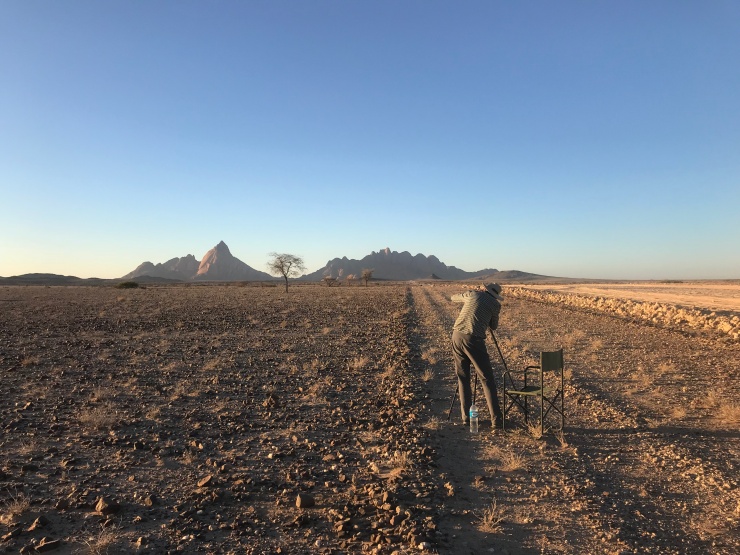
On our way to Spitzkoppe, we’ll stop to photograph it in the distance. As we get closer and closer the views are more and more stunning.
Before we get to our spectacular Spitzkoppen Lodge, there is an acacia that we need to find.
Actually, it’s not only one acacia, but a few. These trees are strategically located and you can create a beautiful composition by placing a small acacia right in the middle of the view of Spitzkoppe.
We’ll scout the area until we find the African trees, so we can plan our Sunrise and Sunset shots here.
1:00 pm
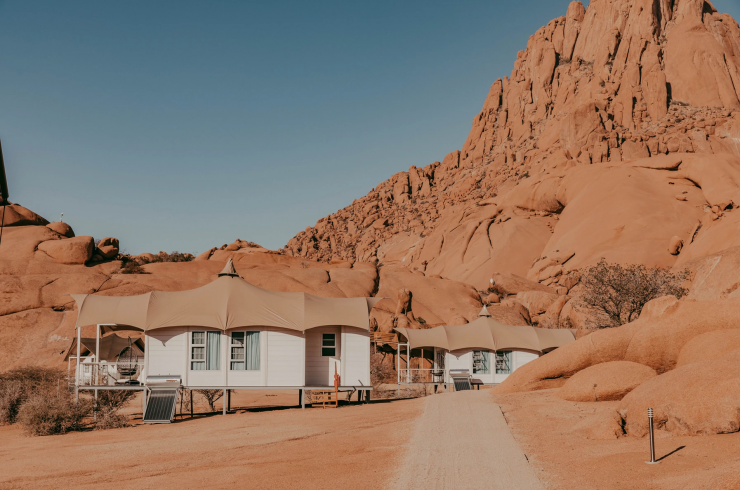
The Luxury Spitzkoppen Lodge is located at the heart of the Grosse and Kleine Spitzkoppe mountains.
Both mountains are important sites in describing patterns of hunter gatherer settlement and subsistence that occurred in the area until the introduction of livestock during the previous millennium. Evidence is documented at over forty rock-art sites. In addition to their historical significance the cultural and spiritual value of the sites makes the Spitzkoppe an important heritage area for all Namibians.
We couldn’t choose a better place to stay. We’ll have lunch at the delicious restaurant of the lodge and we’ll go to rest a bit.
3:00 pm
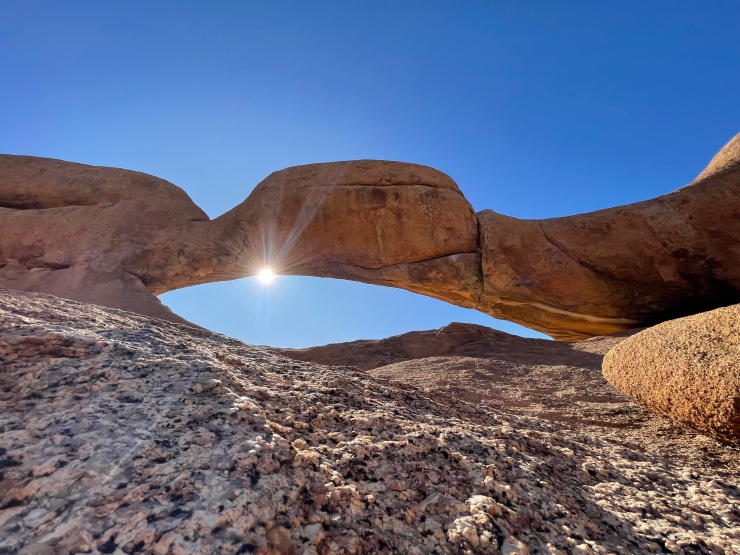
It’s time to go scouting.
Just a few minutes drive from the lodge, we find a hidden (but at the same time famous) natural bridge.
We’ll scout the area around the Bridge to find cool compositions and angles for both Sunset and the Milky Way.
This is a great occasion to take your smartphone and use the Augmented Reality views included in PhotoPills to come up with multiple photo ideas in natural light, with the Sun, the Milky Way and Star Trails.
6:00 pm
For Sunset, we’ve got 2 options. One is to stay at the arch and photograph the Sunset there... The second one is to go and photograph Spitzkoppe range along with the acacia tree we found before lunch.
After deciding...
We’re at the right shooting spot, waiting for the Sun to set. Your composition is ready with the acacia and the Spitzkoppe mountain range right where you want it to be. It’s time to press the shutter and create an amazing panorama, which will be one of the greatest images of our Namibian adventure.
Golden hour begins at 6:19 pm, Sunset is at 6:49 pm, blue hour begins at 7:03 pm and blue hour ends at 7:12 pm.
8:00 pm
Delicious dinner at Spitzkoppe lodge.
11:00 pm

The Milky Way dance begins. You’ll notice that its position varies throughout the night: first horizontal, then diagonal and finally vertical.
We’ll spend as much time as we need to photograph our galaxy and its core with the stone bridge.
The astronomical twilight begins at 7:38 pm and the Galactic Center is visible from 8:03 pm until 2:57 am. It's almost the New Moon phase (4.3%).
1:00 am
Off to bed. It feels so good to sleep under the stars!
Photographic pills:
- Long distance shots of Spitzkoppe.
- Sunset, golden hour and blue hour with Spitzkoppe and an acacia tree or the natural bridge.
- Milky Way and the natural bridge.
Day 7. Sunday, September 1st - The Bushman Paintings

6:00 am
Yesterday afternoon, during the Sunset, the Sun was right behind Spitzkoppe. That’s why the rock formation was a bit dark in our photos. But during the Sunrise, the light hits our subject from the side, enhancing its volume, texture and golden and red tones. Spectacular!
The idea is to repeat the panorama we took the day before. However, this time we’ll try to capture the acacia tree and Spitzkopppe in much better light conditions.
Blue hour begins at 6:46 am, golden hour begins at 6:54 am, Sunrise is at 7:08 am and golden hour ends at 7:38 am.
8:30 am
Breakfast at the lodge and down time.
11:00 am
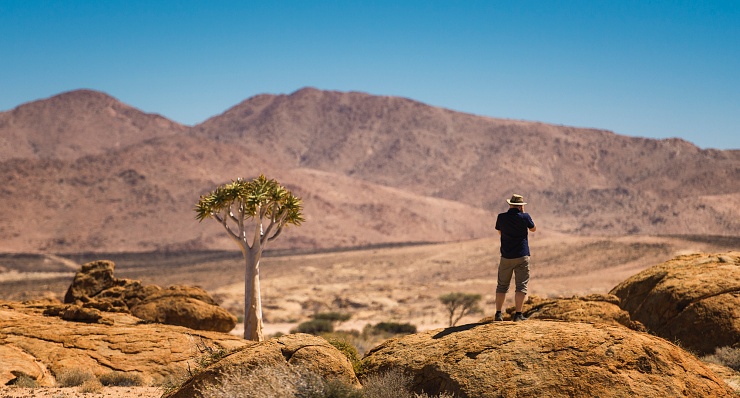
Switch on the scouting mode because Spitzkoppe hides many treasures. One of them is a beautiful Quiver tree. This one is not easy to find, but we’ve been told it is there, hidden somewhere.
The Quiver tree (Aloidendron dichotomum) is indigenous to South Africa and Namibia. Believe it or not, it’s not really a tree, but a species of Aloe (succulent plant) that can reach a height of 9 m (30 ft).
The plan is to find the tree and plan a few Milky Way shots with it. Why not a panorama capturing the whole Milky Way arch and the Quiver tree beneath? That’s just an idea :)
1:00 pm
Back to the lodge, where our lunch is ready. It’s a beautiful day. And life is good.
3:00 pm
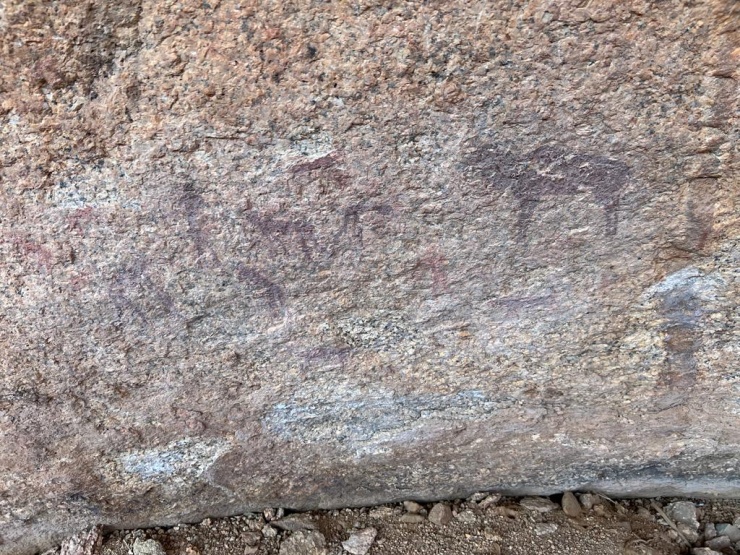
We’re visiting the Bushman’s rock paintings. As I said, Spitzkoppe hides many secrets. And we’ll spend the afternoon discovering the hidden ancient art among many other interesting features.
6:00 pm
At Sunset, we’ll have many options: the natural arch, the landscapes surrounding our lodge, the Quiver tree...
Golden hour begins at 6:19 pm, Sunset is at 6:49 pm, blue hour begins at 7:03 pm and blue hour ends at 7:12 pm.
8:00 pm
Dinner at the lodge while we’re waiting for the stars to appear in the sky.
9:30 pm
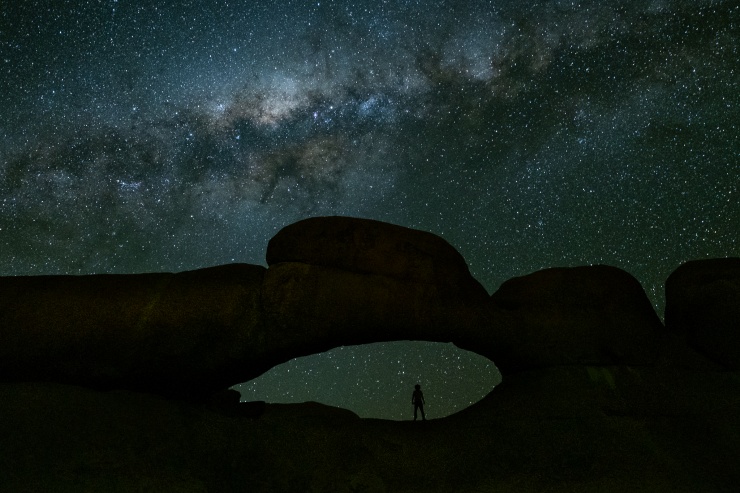
Plan A is to photograph the Milky Way and the Quiver Tree we found in the morning. But, we can always go back to the natural arch and photograph it under the Milky Way one last time. Or maybe you prefer to capture the stars trailing above it.
The astronomical twilight begins at 7:38 pm and the Galactic Center is visible from 8:04 pm until 2:53 am. The thin Moon (1.4%) will be below the horizon.
1:00 am
Bed time!
Tomorrow we’re heading north, in search of the Desert Elephant.
Photographic pills:
- Sunrise, golden hour and blue hour with Spitzkoppe and an acacia tree.
- Sunset, golden hour and blue hour with the Herero people.
- Milky Way and the Quiver tree. And maybe the Herero too.
Day 8. Monday, September 2nd - The Gorge
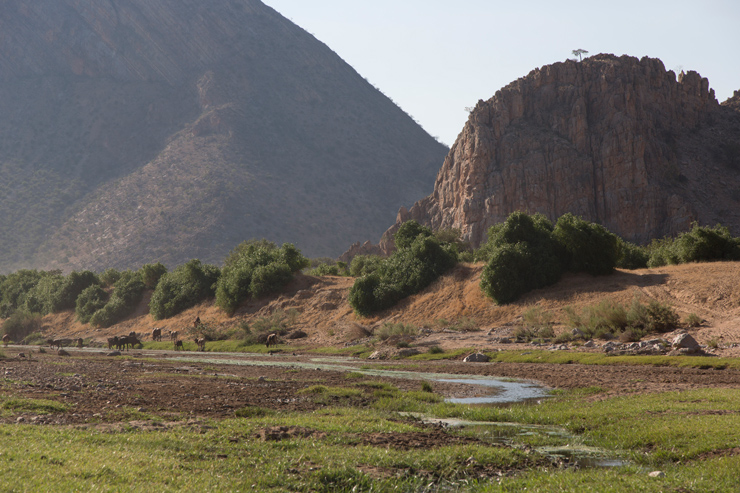
9:00 am
After having our last breakfast among the red rock formations of Spitzkoppe, we’re heading north, past the impressive Brandberg mountains and towards Angola.
In the next two days, we’ll be photographing the banks of the Hoanib river and the magnificent Khowarib Gorge.
But most importantly, on September 3rd we’ll spend a full day in search of the skinny and rare Desert Elephants.
It’s a 6-hour drive to our next lodge by the Hoanib river, the Khowarib Lodge.
12:00 pm
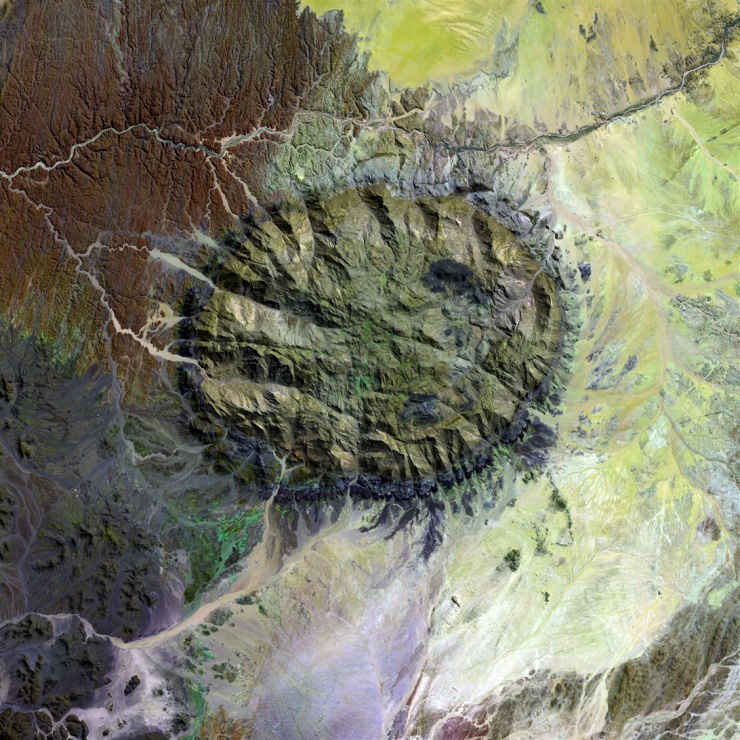
On our way north, we’ll pass the Brandberg mountains.
Brandberg means “fire mountain” in German. The massive granite mountain range got its name due to the scarlet color it gets at Sunrise and at Sunset.
Look! There you have it!
The desert and the Brandberg mountains. The mountain range has an almost perfect 32 km (20 mi) circular shape and it includes the highest point in Namibia, the King’s Stone (Königstein), with a height of 2,600 m (8,550 ft).
Take your cameras out, it’s time to shoot.
1:00 pm
Stop for lunch.
4:00 pm
We finally arrive at the Khowarib Lodge where we’ll enjoy a well deserved rest.
6:00 pm
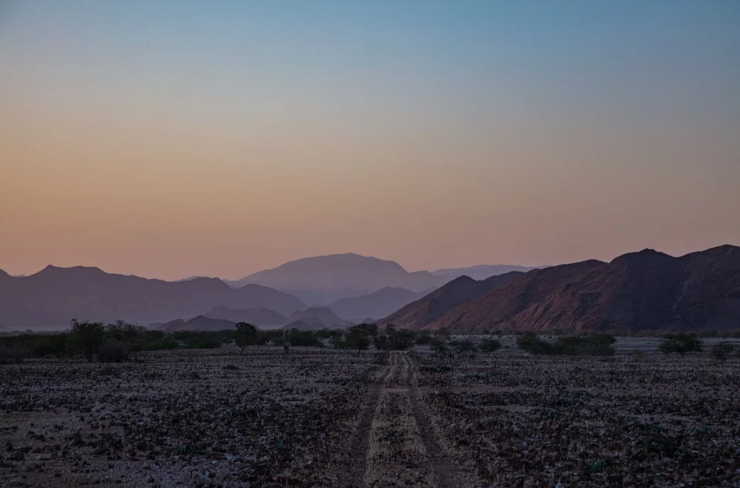
Are you going to skip Sunset today?
Maybe it’s a good idea to chill a bit and enjoy the beautiful Sunset while enjoying a cold beer or a glass of wine at the lodge.
But...
If you want more action, we’ll surely find a good Sunset spot not far from the lodge too.
Golden hour begins at 6:27 pm, Sunset is at 6:56 pm, blue hour begins at 7:10 pm and blue hour ends at 7:19 pm.
8:00 pm
Dinner at the lodge.
10:00 am
Bed time!
Tonight we’ll see desert elephants in our dreams. Tomorrow we’ll photograph them.
Photographic pills:
- Optional Sunrise at Spitzkoppe.
- Brandberg mountain
- Sunset, golden hour and blue hour at Khowarib gorge.
Day 9. Tuesday, September 3rd - The Desert Elephant Quest
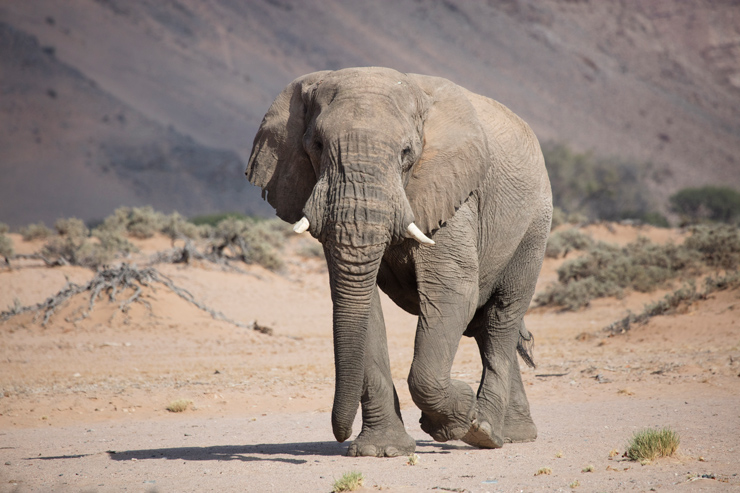
6:00 am
Wake up!
We’ll have an early breakfast today!
7:00 am
We’ll jump onto special vehicles and, with the help of a local guide, we’ll go in search of the rare elephant of the desert.
These elephants are tough as a rock. They have learned to survive the harsh conditions of the desert, with very little water. This extreme situation has led them to develop unique conditions. They are thinner and taller than the rest of the African elephants. And they even have wider hooves.
They are definitely not easy to spot, so we’ll spend all day on safari tracking them with the help of our local expert.
1:00 pm
When we’re hungry, we’ll stop in a beautiful place and devour the delicious lunch the chef has specially prepared for us.
2:00 pm
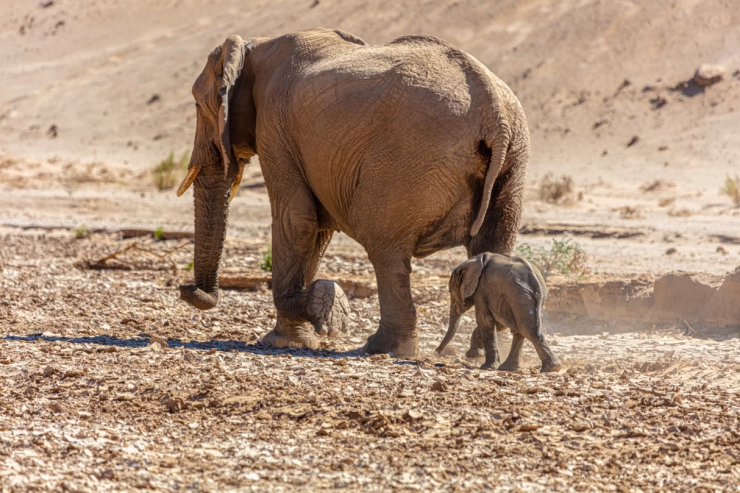
Look over there! More elephants!
In the afternoon, we’ll continue our adventure to photograph the desert elephants up and down the Hoanib riverbed.
Possibilities of other game include, but are not limited to, zebra, springbok, gemsbok, steenbok, ostrich, giraffe, baboons, and a wide range of birdlife.
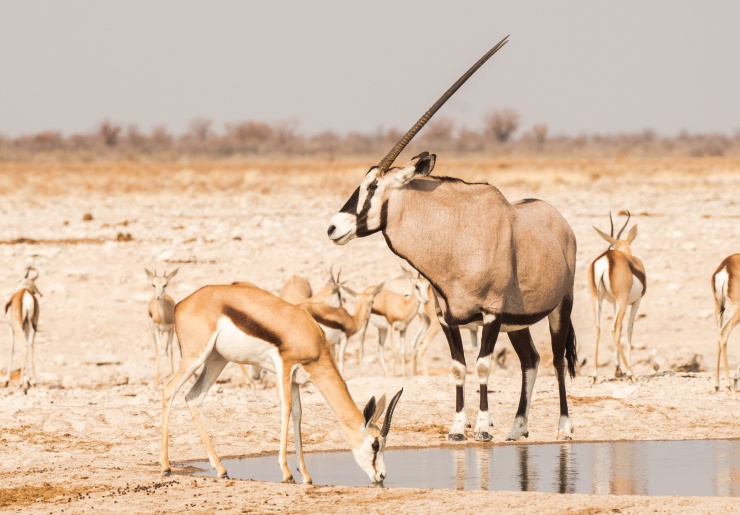
5:00 pm
Back to the lodge and free time.
My suggestion: just chill!
8:00 pm
Dinner at the lodge.
10:00 pm
It’s been a long long day. So the plan is to just relax at the lodge while enjoying a cold beer under the stars. Tempting, isn’t it?
Of course, if you have some energy left you can always photograph the Milky Way :)
The astronomical twilight begins at 7:44 pm and the Galactic Center is visible from 8:09 pm until 2:44 am. It's New Moon today.
12:00 am
Bed time!
Tomorrow we’ll keep our adventure north, towards Angola, in search of the Himba people.
Photographic pills:
- The desert elephant.
- Zebra, springbok, gemsbok, steenbok, ostrich, giraffe, baboons, and a wide range of birdlife.
- Sunset, golden hour and blue hour on our way back by the lodge.
- Milky Way near the lodge.
Day 10. Wednesday, September 4th - The Waterfalls
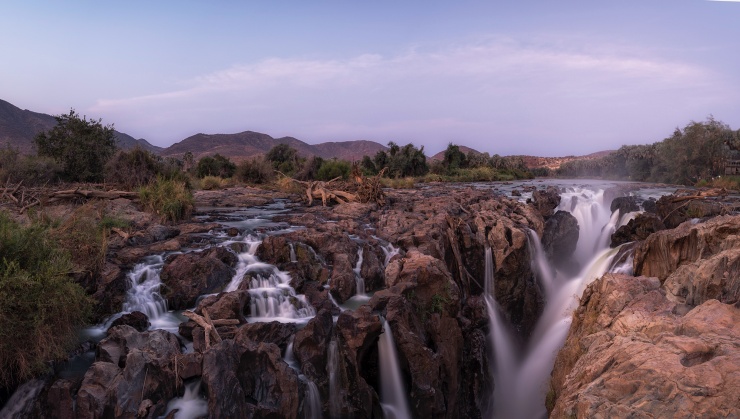
9:00 am
Copious breakfast and to the vehicles.
We continue our adventure north, towards Angola... We’re going to Epupa, to photograph the beautiful Epupa waterfalls, the baobab trees and the Himba!
Today we’re going to travel many kilometers. But believe me, it’ll be worth it.
We want to enjoy a more authentic experience with the Himba, fleeing tourist places.
To achieve this we'll enter a spectacular territory (less known) until we reach the border with Angola. There we'll settle very close to the Epupa waterfalls (on the Kunene river) which, despite not having much water at this time of year, is a spectacular place to photograph the Sunset (the Sun sets at 7:00 pm).
Along the way we'll take advantage of the photographic opportunities that arise... And we'll stop to eat and cool off when we need it.
5:00 pm
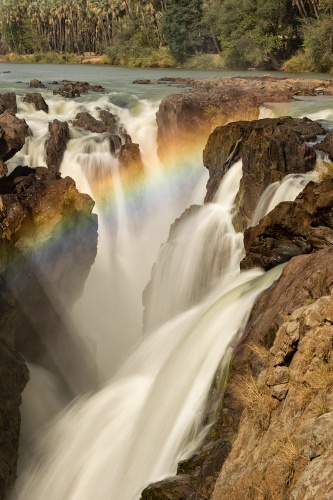
We’ll stay at the comfortable safari-style tents of Epupa Camp, close to the Kunene River and close to the Epupa Falls.
Also known as Monte Negro Falls in Angola, Epupa Falls is a series of large waterfalls formed by the Cunene River on the border of Angola and Namibia.
The spectacular Cunene River drops in a series of waterfalls across a length of 1.5 km (0.93 mi), with the greatest single drop being 37 m (121 ft) in height.
Epupa is derived from the word “herero”, meaning the foam created by falling water.
After a long day, we’ll make an effort to explore the area and look for our compositions for the Sunset... and for later on, including the Milky Way.
Our subjects: the river, the falls and the baobab trees.
Golden hour begins at 6:31 pm, Sunset is at 7:00 pm, blue hour begins at 7:14 pm and blue hour ends at 7:22 pm.
Ah!
And don’t forget to aim your camera up, and photograph the Milky Way among the tall palm trees.
The astronomical twilight begins at 7:48 pm and the Galactic Center is visible from 8:12 pm until 2:33 am. The Moon (2.6%) will be below the horizon.
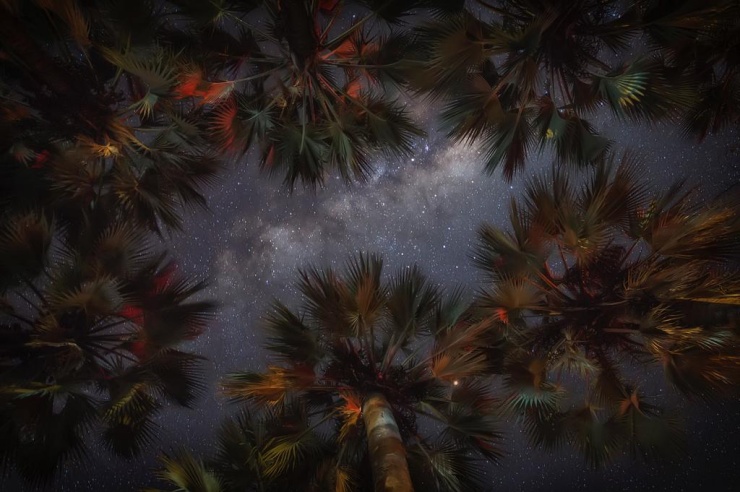
11:00 pm
After a good dinner under the stars, it's time to rest.
Tomorrow we'll visit the Himbas.
Photographic pills:
- Photographic opportunities on the way to the Angolan border.
- Sunset at Epupa waterfalls.
- Milky Way and Star trails at the Epupa waterfalls.
Day 11. Thursday, September 5th - The Himba
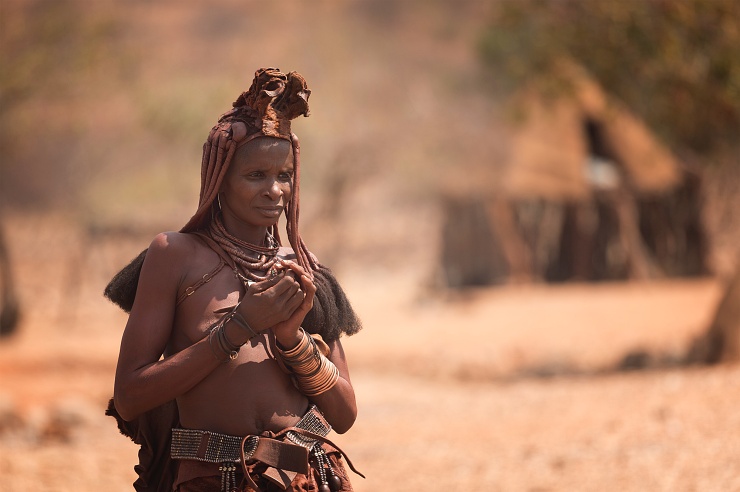
6:00 am
Optional Sunrise at Epupa falls. The Sun rises at 7:10 am.
9:00 am
Breakfast by the river!
10:00 am
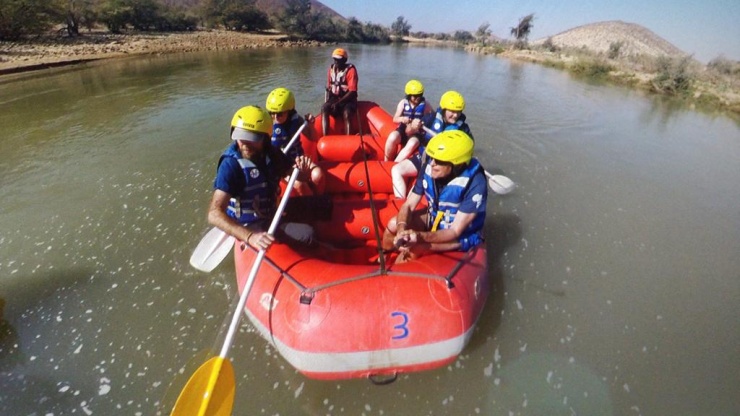
You only live once... Ready for something different?
What about doing some rafting in the Cunene river?
We will be onboard on a gentle cruise that will take us down the river. While navigating along the river there’ll be plenty of time to enjoy the scenery, watch the birds and the crocodiles sunbathing on the banks, and take mesmerizing photographs.
Rafting in the Cunene river is an experience like no other.
No prior rafting experience is required. Our guide will instruct us and also give us a safety briefing. Helmets, safety jackets, and dry bags for cameras and other personal belongings are provided.
Those who do not want to paddle or are a bit wary of the water, there are 8-seater rafts where our guide does the paddling and maneuvering for you. However, the greatest fun is the 2-seater crocs, where you and your partner do the paddling.
1:00 pm
Lunch and siesta!
4:00 pm
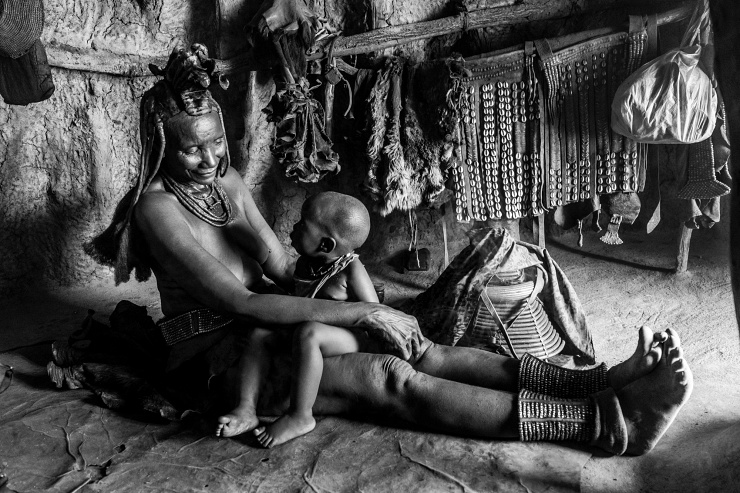
The Himba are an ancient tribe in Namibia, closely related to the Herero. They are tall, beautiful and super friendly. Their skin is rubbed with red ochre and their hairstyle is unique and beautifully decorated.
The Himba live a semi-nomadic life, breeding cattle and goats. They’ve learned to survive in the harsh conditions of the desert.
We’ll spend the afternoon with the Himba, learning their traditions and taking photographs.
Besides that, we have a very important mission to take care of... We need to find among the members of the tribe some volunteer(s) that we can use as models to photograph them at night, under the stars.
Golden hour begins at 6:32 pm, Sunset is at 7:01 pm, blue hour begins at 7:14 pm and blue hour ends at 7:23 pm.
8:00 pm
Dinner at Epupa Camp.
9:30 pm
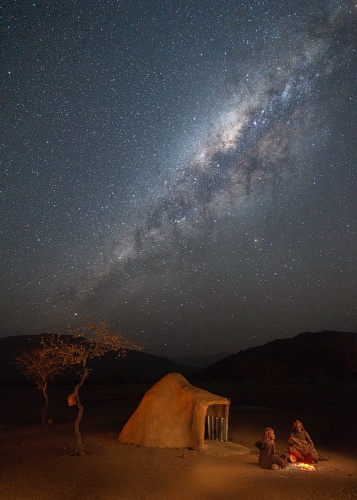
If the negotiations have gone well in the afternoon, we’ll spend the night with our hosts, the Himba, photographing them under the stars.
The astronomical twilight begins at 7:48 pm and the Galactic Center is visible from 8:12 pm until 2:33 am. The Moon (6.2%) will be below the horizon.
12:00 am
Bed time!
Tomorrow we’ll start our journey south towards Etosha National park, a true wildlife realm.
Photographic pills:
- Sunrise, golden hour and blue hour at Epupa waterfalls.
- Crocodiles and birds while rafting.
- Sunset, golden hour and blue hour with the Himba.
- Milky Way with the Himba.
Day 12. Friday, September 6th - Western Etosha
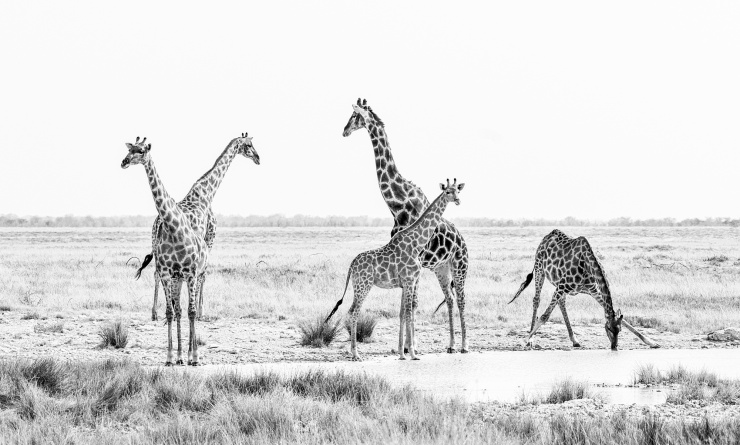
9:00 am
Breakfast and to the vehicles... We're going to Etosha National Park!
In its more than 22,000 km of incomparable landscapes, Etosha is home to 114 species of mammals, including 4 of the Big Five: lion, leopard, elephant and rhinoceros. It’s also the habitat of more than 400 species of birds and 110 species of reptiles... Tons of them!
In addition to this, among its treasures are three species of antelope: the beautiful black-faced impala, the elegant roan antelope and the small Damara dik-dik – the smallest antelope in southern Africa as it’s only 40 cm tall.
Did you hear it? It’s a lion roaring.
3:00 pm
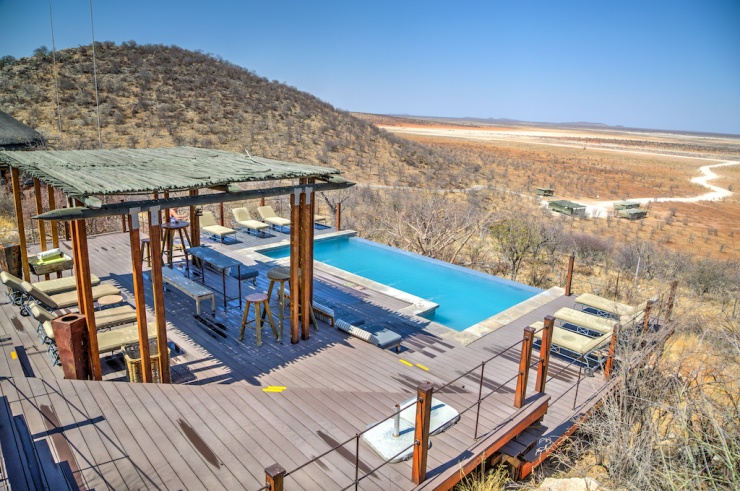
We’re staying at Etosha’s new and exclusive Dolomite Camp, which opens up the restricted western side of the park to a limited number of visitors.
We’ll be accommodated in permanent luxury tents with an elevated view of the endless plains of Etosha National Park in Namibia.
Here, the wildlife has developed without human disturbance and rare species such as black rhino and black-faced impala have established themselves in the area.
The area is rich in waterholes that attract elephant, rhino, leopard, lion, springbok, gemsbok and red hartebeest. The birdlife is prolific and the seasonal flowers of Dolomite Hill are a highlight for botanists.
Perched on the top of a little hill, Dolomite Camp offers sublime views to complement the luxuriously appointed camp.
The camp is unfenced allowing animals to roam freely between the tents and communal area. However, with personal escorts your safety is guaranteed at all times.
5:00 pm
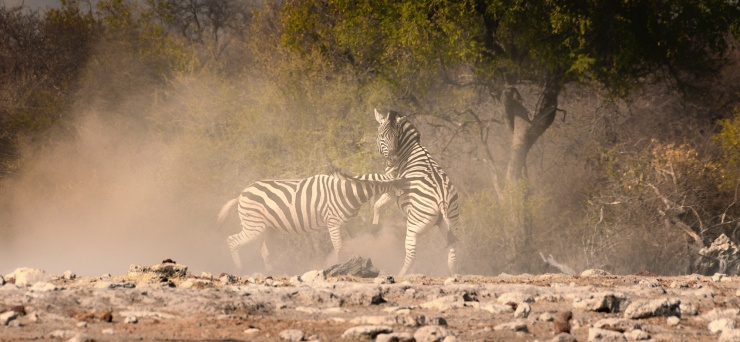
Afternoon game drive!
Game drives in the area allow for exclusive game viewings as the area is still restricted.
Our experienced and knowledgeable guides will take us through this pristine area and the many waterholes offer high chances of spotting a diversity of wildlife.
Look! A giraffe!
Golden hour begins at 6:25 pm, Sunset is at 6:55 pm, blue hour begins at 7:08 pm and blue hour ends at 7:17 pm.
8:00 pm
Dinner time!
The restaurant serves delicious and satisfying meals and the personnel will always greet you with a smile. A rim flow swimming pool, a curio shop and a viewing deck overlooking a prolific waterhole provide entertainment during the day, while the bar area is ideal to relax and socialize with other guests.
10:00 pm
As we close our eyes we visualize all the photos and experiences lived so far.
Rest well my friends, tomorrow we’ll cross Etosha towards Okaukuejo, where a magical waterhole awaits.
Photographic pills:
- Optional Sunrise at Epupa falls.
- Namibian landscapes on our way to Etosha.
- Wildlife at Sunset in western Etosha.
Day 13. Saturday, September 7th - The Etosha Big 4
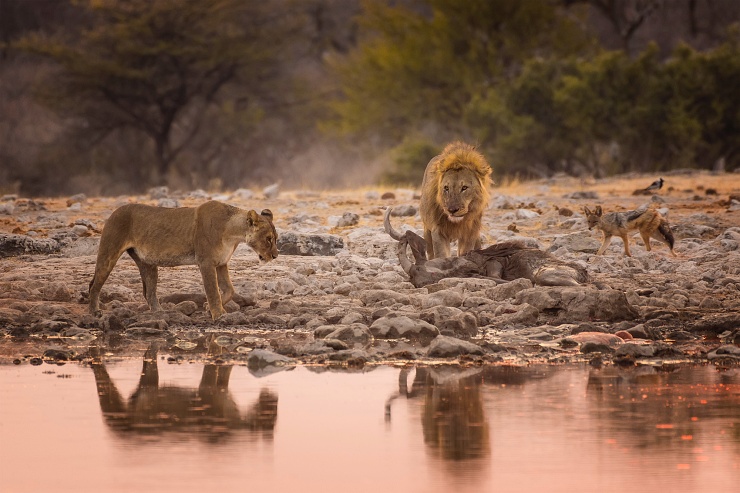
6:00 am
Optional Sunrise shooting session at Dolomite Camp.
Blue hour begins at 6:42 am, golden hour begins at 6:51 am, Sunrise is at 7:04 am and golden hour ends at 7:34 am.
9:00 am
Delicious breakfast at Dolomite Camp and back to the vehicles. Today we’re heading east, across Etosha in a full day photo-safari towards Okaukuejo (pronounced oka-KOO-yo), our resort in the park.
We’ll be among elephants, giraffes, zebras, impalas, oryxes, hyaenas, lions... photographing them.
12:00 pm
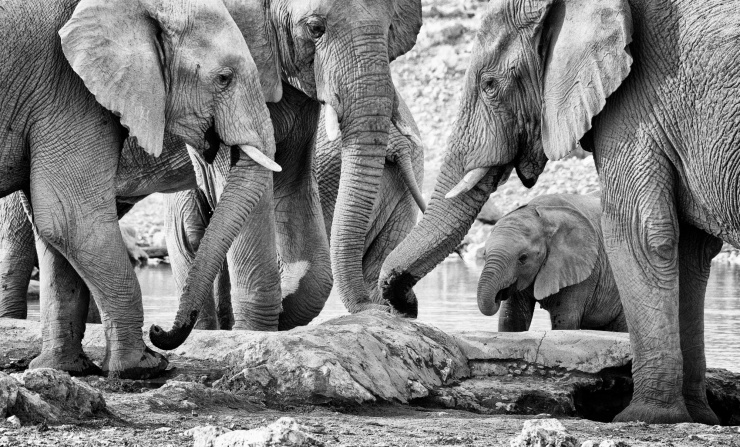
We'll stop for lunch when we’re hungry, and we’ll continue our safari in Etosha until Sunset.
But remember that the gate of Okaukuejo closes at Sunset. No one is allowed to stay in the park at night. So we need to make sure we get through it in time.
Golden hour begins at 6:20 pm, Sunset is at 6:49 pm, blue hour begins at 7:03 pm and blue hour ends at 7:12 pm.
7:00 pm
We arrive at Okaukuejo, a resort with all the comforts within Etosha: restaurant, swimming pool, bar... and its famous flood-lit waterhole.
And the good news is that we’ll be staying in comfortable Chalets next to the waterhole :)
8:00 pm
Dinner at Okaukuejo restaurant.
9:00 pm
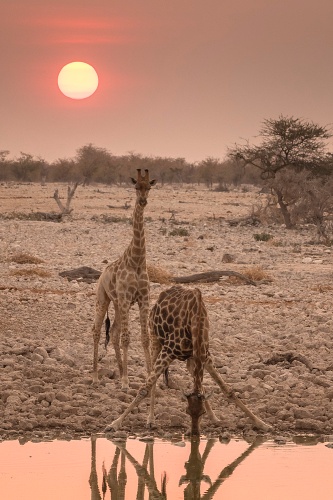
As I mentioned before, in Okaukuejo there is a spectacular waterhole. There we can wait for the night to come while watching a large variety of wildlife that comes to drink and refresh after a long day under the Sun.
Unfortunately the lights at the waterhole will play against our plan to photograph the Milky Way along with the wildlife in a single exposure... But we can always use 2 exposures. One for the foreground (waterhole and wildlife) and another one for the sky.
The astronomical twilight begins at 7:37 pm and the Galactic Center is visible from 8:02 pm until 2:12 am. The Moon (18%) sets at 10:26 pm.
11:30 pm
While you’re trying to get to sleep you hear the wind, a lion roaring... And the noise of some PhotoPillers’ camera shutters photographing the Milky Way.
Photographic pills:
- Sunrise, golden hour and blue hour at Dolomite Camp.
- African savannah and the opportunities that arise on the way to Okaukuejo.
- Wildlife in Etosha.
- Wildlife at the Okaukuejo’s waterhole.
Day 14. Sunday, September 8th - The wonders of Etosha
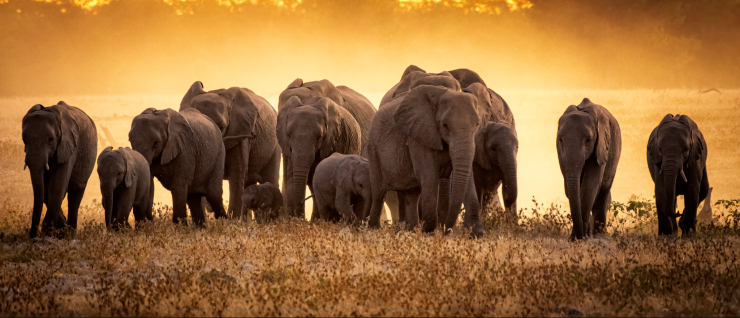
6:00 am
The gate opens at Sunrise. And when this happens, we’ll be first in the queue, ready to access the park. The plan is to quickly get to a nearby water hole and photograph the wildlife during golden hour.
The waterwhole might be empty or packed, you never know. But that’s the photography game. Rule #1 is to be always ready at the shooting spot, patiently awaiting for the right moment to come.
Over there! An elephant is approaching!
Blue hour begins at 6:35 am, golden hour begins at 6:44 am, Sunrise is at 6:58 am and golden hour ends at 7:27 am.
9:00 am
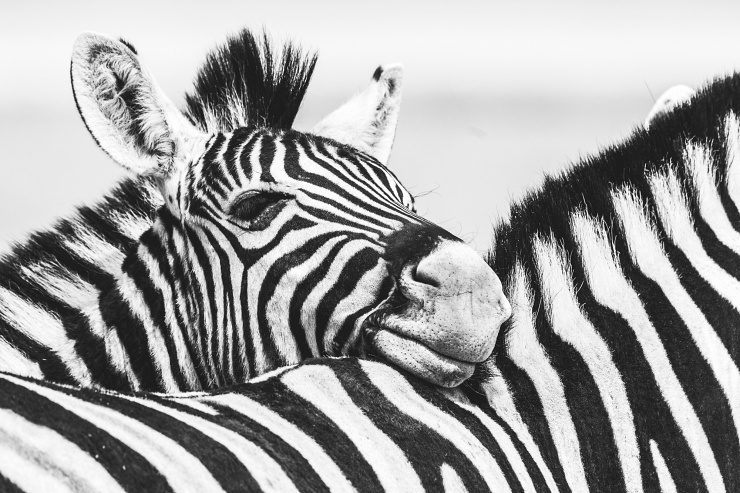
Breakfast at the resort and back to the vehicles.
Thanks to our guide’s expertise, today we’ll explore the most frequented waterholes on the west side of Etosha.
12:00 pm
At some point we'll stop for lunch and then continue our safari through the Etosha savannah. But keep your eyes open in case something unexpected suddenly happens.
By the way...
It’s out of the question to get off the vehicle In Etosha. It’s big cats’ territory!
We’ll continue going up and down Etosha in search of all kinds of wildlife.
6:00 pm
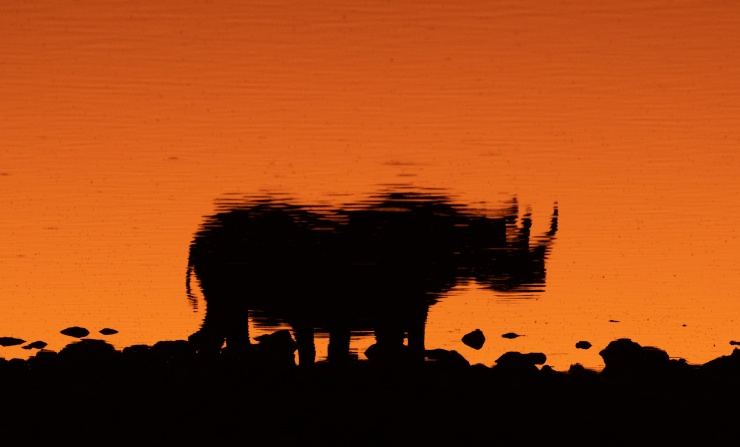
Before the golden hour begins, we’ll be back at the Okaukuejo Campsite. Next to the waterhole to be more precise.
Why?
Well...
Because according to PhotoPills the Sun will set aligned with the waterhole, giving us a great opportunity to photograph giraffes, elephants or even rhynos along with the setting Sun.
Golden hour begins at 6:20 pm, Sunset is at 6:33 pm, blue hour begins at 6:49 pm and blue hour ends at 7:03 pm.
9:00 pm
Dinner time at the resort and back again to the waterwhole. The truth is we never get tired of photographing the thirsty wildlife.
The astronomical twilight begins at 7:37 pm and the Galactic Center is visible from 8:02 pm until 2:16 am. The Moon (26%) sets at 11:18 pm.
11:00 pm
Bed time! Rest well my friend. Because tomorrow another exciting day awaits!
Photographic pills:
- Sunrise, golden hour and blue hour at a whaterhole near Okaukuejo.
- Wildlife in Etosha.
- Wildlife at the waterhole of Okaukuejo.
Day 15. Monday, September 9th - The Etosha pan
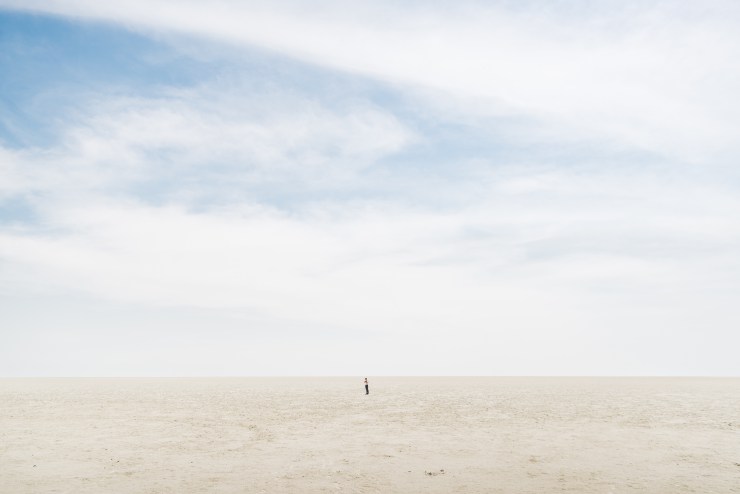
6:00 am
The gate opens again at Sunrise. And we won’t miss the opportunity to get into the park to photograph the diverse wildlife around Okaukuejo during the golden hour.
As Galen Rowell used to say:
“You only get one Sunrise and one Sunset a day, and you only get so many days on the planet. A good photographer does the math and doesn't waste either.”
Blue hour begins at 6:35 am, golden hour begins at 6:43 am, Sunrise is at 6:57 am and golden hour ends at 7:26 am.
9:00 am
After a healthy breakfast at the Okaukuejo Campsite, we’ll pack up everything and start driving towards the east, across Etosha.
The plan is to spend the whole day photographing the wildlife we encounter...
12:00 pm
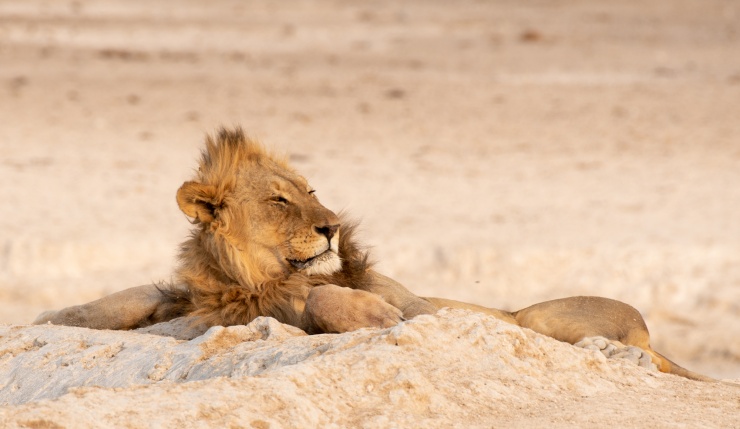
We’ll drive to the central area of the park, where the salt crust of Etosha pan, an ancient lake that was once fed by the waters of the Kunene River, is. Your eyes will be delighted with the white landscape...
The tectonic movements of the Earth's crust altered the course of the river condemning the pan to become what it is today: a white desert!
We’ll stop our expedition somewhere inside the park to rest, cool off and have lunch in the middle of the savannah.
In the afternoon, we’ll continue our adventure in Etosha in search of all kinds of wildlife.
6:00 pm
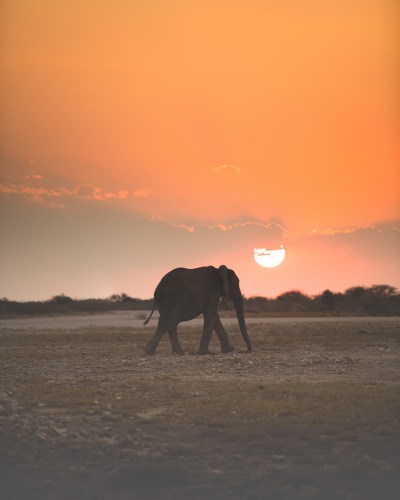
After a long long day going up and down Etosha, we’re finally back to Okaukuejo, tripods, cameras and lenses ready by the waterhole... The show is about to begin.
We patiently wait for the elephants, zebras and giraffes to come and refresh themselves in the waterhole after a long day under the Sun.
Golden hour begins at 6:20 pm, Sunset is at 6:33 pm, blue hour begins at 6:49 pm and blue hour ends at 7:03 pm.
9:00 pm
After dinner, the options are open. You can decide to chill a bit at the Chalet or, if you didn’t have enough, the waterhole is just a few minutes walk.
The astronomical twilight begins at 7:37 pm and the Galactic Center is visible from 8:02 pm until 2:16 am. The Moon (36%) sets at 12:18 am.
Hint: The Moon is aligned with the waterhole :)
11:00 pm
It’s been a long long day of photography. Sleep well my friend. The adventure will resume tomorrow.
Photographic pills:
- Sunrise, golden hour and blue hour at a whaterhole near Okaukuejo.
- Etosha Pan.
- Wildlife in Etosha.
- Sunset, golden hour, and blue hour at the waterhole of Okaukuejo.
Day 16. Tuesday, September 10th - The Leopard Quest
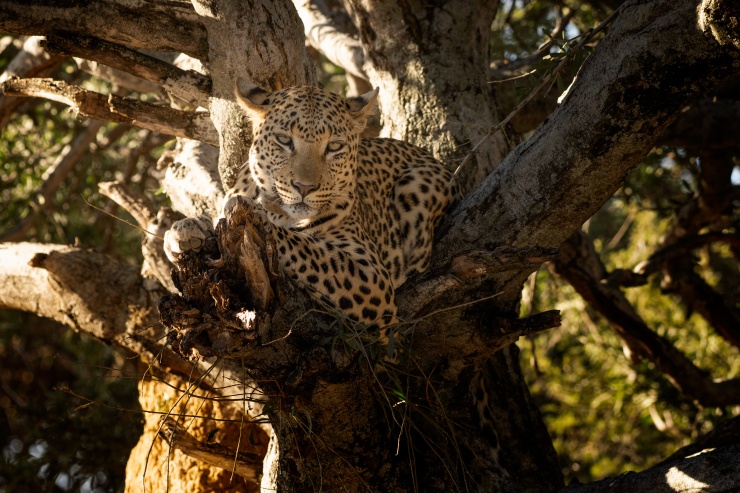
6:00 am
We wake up in Etosha for the last time. Today we’re going south in search of leopards.
The Sun is about to rise, the gate of Okaukuejo opens and we immerse ourselves again into the great outdoors. We’re ready to press the shutter to take advantage of any opportunity to photograph a lioness, an elephant or an impala in the morning golden light.
Blue hour begins at 6:34 am, golden hour begins at 6:42 am, Sunrise is at 6:56 am and golden hour ends at 7:25 am.
9:00 am
After another great breakfast prepared by the chef of the resort, we’re ready to depart.
It’s a 3-hour journey to our next destination.
While crossing Etosha we’ll enjoy and photograph the wildlife game.
Then, we’ll cross Anderson Gate and go south towards Okonjima Wildlife Reserve. There we’ll sleep in comfortable rooms for our last night in Africa.
Okonjima is a 20,000-hectare nature reserve surrounded by the sandstone Omboroko Mountains, very rich in wildlife and picturesque landscapes. It’s also home to The AfriCat Foundation, which is renowned for its conservation work with predators across Namibia.
1:00 pm
We’ll check into the comfortable rooms at the Okonjima Plains Camp and enjoy a delicious lunch at the lodge.
3:00 pm
Siesta time (nap time)
5:00 pm
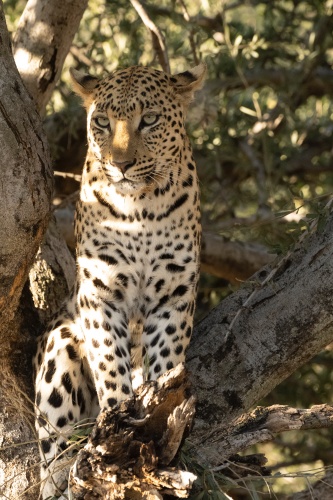
A dense population of leopards dwells in Okonjima.
However, spotting them is not easy. So we’ll climb on special vehicles and with the help of an expert guide, we’ll adventure into the savannah in search of the leopard.
The plan is to spend the afternoon photographing this intelligent and solitary predator.
Golden hour begins at 6:17 pm, Sunset is at 6:45 pm, blue hour begins at 7:00 pm and blue hour ends at 7:09 pm.
8:00 pm
Unfortunately, the trip is coming to an end.
But before the farewell, we want to take you out for dinner, a very special dinner in the middle of the savannah, under the stars.
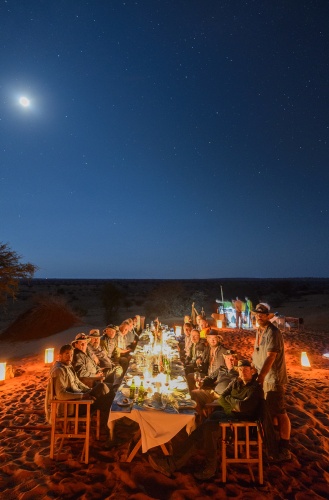
We’ll go to a remote location in the wild, where they’ll be waiting for us with the table set. It's not a restaurant, but we won’t have to cook either. We’ll be amazed by the local chef.
It will be our last dinner in Namibia... And we’ll remember it for the rest of our lives.
11:00 pm
And after dinner... we’ll try to accomplish a true challenge.
To photograph the giraffes under the stars!
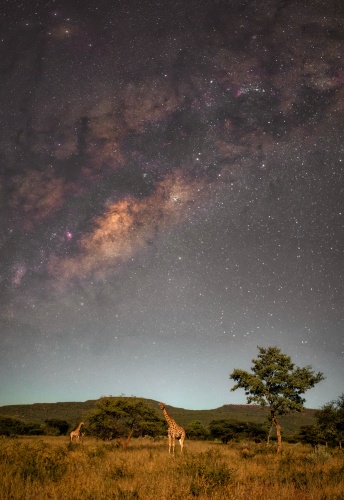
Photographic pills:
- Sunrise, golden hour and blue hour at a waterhole near Okonjima.
- Leopards, hyaenas, pangolins and more in Okonjima.
- Bush dinner group photo.
- Giraffes under the Milky Way
Day 17. Wednesday, September 11th - The Farewell
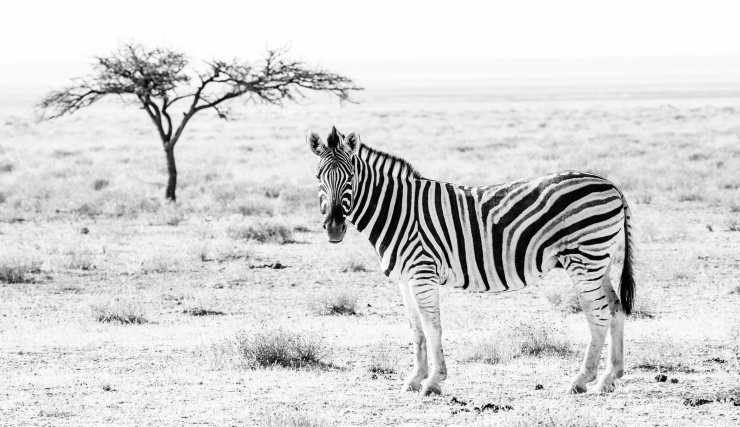
6:00 am
Wake up!
This is our last Sunrise in Africa, and we want to take advantage of it. We’ll jump again onto Okonjima’s safari vehicles and go in search of the Leopard.
You never know, they are active hunters at dawn, we might get lucky and photograph a leopard with its prey.
We’ll be there, ready, just in case luck is on our side.
Blue hour begins at 6:30 am, golden hour begins at 6:39 am, Sunrise is at 6:53 am and golden hour ends at 7:22 am.
9:00 am
After our last breakfast together, we’ll drive to Windhoek.
Okonjima is about 3 hours from the airport. Fly in the afternoon so you don’t have to miss the morning game drive. Or better yet, stay one night more in Windhoek, and fly out on Thursday.
It's time to say goodbye.
See you soon my friends!
Life goes on...
Book now and save €500 (only 12 spots)
To book your spot to join the expedition to Namibia at a reduced price of €12,000 (the official price is €12,500), a €3,000 deposit is required by Sunday September 24th.
The balance payment will be made via three payments due on the following dates:
- December 17th 2023
- February 25th 2024
- May 26th 2024
Please, finalize your booking as soon as possible. The seats are sold on a first come, first served basis.
What’s included in the price
- PhotoPills Welcome kit.
- Pick up at Windhoek airport and transfer to the hotel. Transfer to Windhoek airport at the end of the adventure.
- A 17-day expedition photographing the essence of Namibia with the Milky Way and the golden light.
- 17 days of learning, fun and adventure with Laura Oppelt, Antoni Cladera and the funniest geek community – the PhotoPillers.
- Full immersion in the PhotoPills method (Imagine.Plan.Shoot!).
- Private transportation in a 4x4 Toyota Land Cruiser Safari Vehicles (9 seater) and a 4x4 Toyota Land Cruiser Safari Vehicles (11 seater)
- All vehicle costs including fuel.
- All park entry fees.
- Water in the vehicle at all times.
- Activities:
- Secret day special activities (super fun).
- Desert Elephant tracking.
- Rafting in the Kunene river at Epupa Falls.
- Himba village photography.
- 2 Leopard tracking in Okonjima.
- All activities that can be done with NTS guide and vehicle are included.
- All lodging sharing with another PhotoPiller (optional €1,600 single supplement upon availability)
- 1 night at The Weinberg Windhoek (bed and breakfast).
- 2 nights at Sossus Dune Lodge (bed and breakfast).
- 2 nights at Strand Hotel Swakopmund (bed and breakfast).
- 2 nights at Spitzkoppen Lodge (dinner, bed and breakfast).
- 2 nights at Khowarib Lodge (dinner, bed and breakfast).
- 2 nights at Epupa Camp (dinner, bed and breakfast).
- 1 night at Dolomite Camp (bed and breakfast).
- 3 nights at Okaukuejo Resort (bed and breakfast).
- 1 night at Okonjima Plains Camp (dinner, bed and breakfast)
- Farewell bush dinner in the African savannah on September 16th.
What’s not included
- Flights to/from Namibia.
- International medical and travel insurance coverage (mandatory).
- All meals and beverages, except those expressly indicated in the "What’s included in the price" section.
- Tips.
- Alcohol.
- Laundry.
- Anything not mentioned in the “What’s included in the price” section.
Do you want an example of how huge this will be?
This is a glimpse to what happened in the PhotoPills Expedition to Iceland. We had so many adventures and so much fun... We can’t wait for Namibia!
But you don’t have to take our word for granted. Here’s what some PhotoPillers say about the PhotoPills adventures:

“I went to Iceland expecting to have the opportunity to photograph the marvelous landscape and master nightscapes. What I encountered was so much more – 14 kindred souls from across the globe who share a passion for photography. Together we expanded our creative boundaries, learned from one another and had an insane amount of fun in the process. I am confident that everyone came away from the experience a better photographer.”

“From the very moment the guys from PhotoPills announced the expedition to Iceland... I didn’t think it twice! I was using PhotoPills but not at its full capacity, so I had no better chance to learn from the creators of this amazing app. The experience was even more amazing than anything I could have imagined. In Iceland, I discovered a bunch of folks as crazy about photography as I am. I had a blast!
Photography is a continuous learning process, you always find something new that motivates you to improve. And this adventure made me improve more than I could imagine.”

"The PhotoPills guys know how to create a fantastic experience. They bring an infectiously fun energy and are always willing to drop some handy photography knowledge on you that you will take with you. You take their trip and you'll for sure have a good time, get some amazing pics and leave a better photographer."

“During my experience in Iceland I lived wonderful moments and had surprises that were beyond the expected. It completely exceeded my initial expectations! Sharing knowledge, experiences and ways of working and living photography with such a great group has been one of the most enriching life experiences I have ever had.
Who he said that learning and knowledge sharing can not be wonderfully fun?”

“I can't say enough about what a fantastic time I had during the PhotoPills Iceland photo tour! The guys from PhotoPills and Donal Boyd were so knowledgeable, accommodating, and especially lots of fun. Never a dull moment – nonstop action and shooting of amazing landscapes for 10 days. I came away with enough images and memories to last a lifetime!”
FAQs
What’s the temperature in Namibia in August-September?
August and September are very nice months. It’s dry and the skies are clear.
During the day it’s not too hot nor too cold. It cools down at night though. Temperature varies depending on the area but you should expect the range to be between 50ºF (10ºC) and 86ºF (30ºC).
It’s key to wear in layers to be able to adapt to any temperature change.
Nights in the desert can be cold!
What do you recommend I bring along for the expedition?
Your sense of adventure and fun, your camera and your sense of humor, of course.
Besides that? A few months before the expedition begins, we’ll send you an Information Package that will give you further details and suggestions about what to bring (gear, clothing, etc.).
Is travel insurance included in the price of the expedition?
No. Participants are suggested to purchase national or international medical and travel insurance coverage.
Also, we recommend you to choose a travel insurance that:
- Covers trip cancellation costs.
- Covers Covid-19 health, travel and cancellation costs.
What is the cancellation policy?
We hope you don’t need to cancel your spot, but if a situation arises where you don’t have a choice, our cancellation policy is the following.
If you cancel and the expedition is otherwise filled, we'll refund you the full booking fee you have paid, minus a €300 administrative fee, and the non-refundable costs that are withheld by our travel partners.
If you cancel and the expedition doesn’t fill, then you’ll be refunded according to the following schedule, based on the full fee of the expedition:
- 91 days or more before the expedition: 100% refund, minus the deposit payment and the non-refundable costs that are withheld by our travel partners.
- 90 days or less before the expedition: No refunds will be given.
Refunds will be paid using the same original method of payment.
Credits: All images by Antoni Caldera, Marco Grassi and Donal Boyd.
